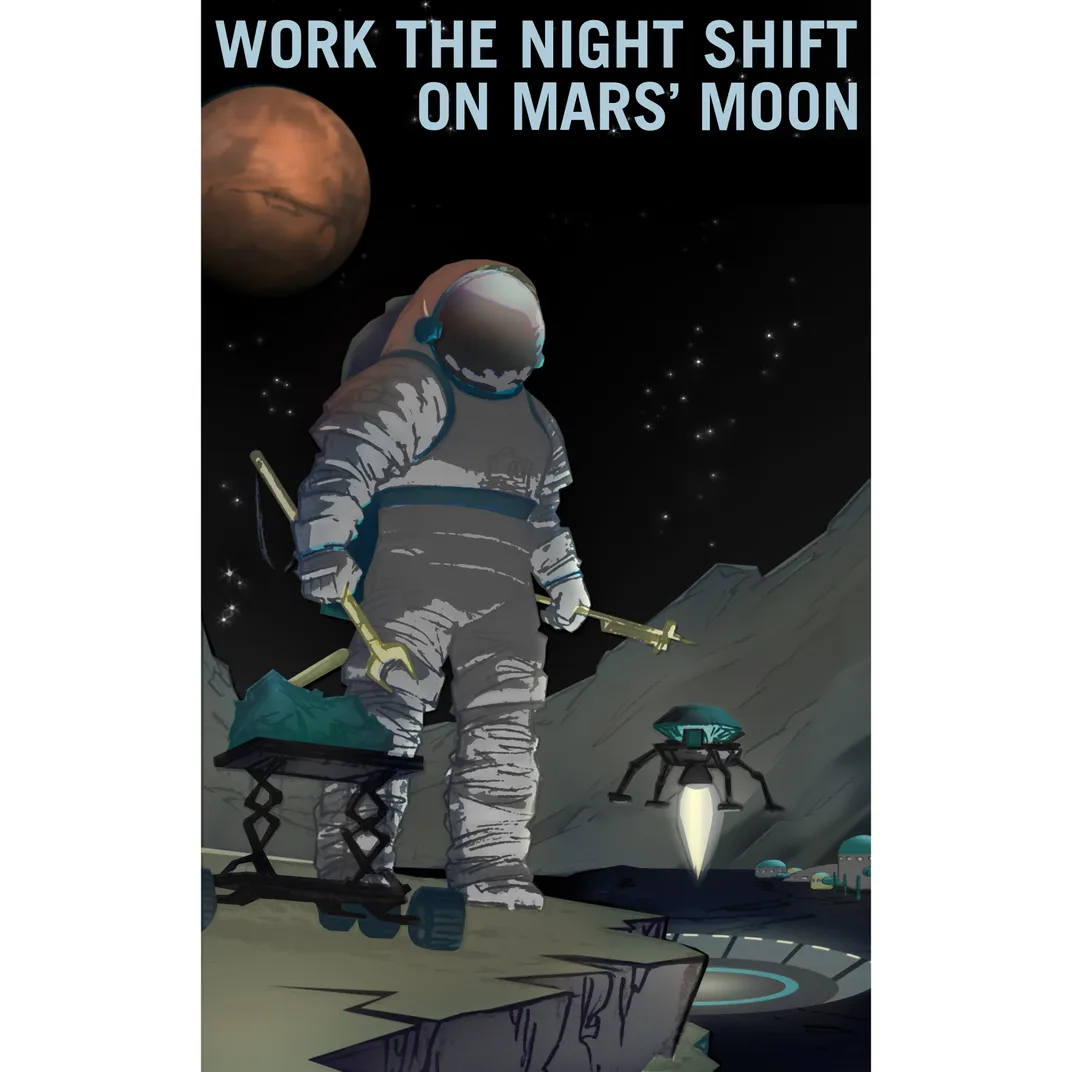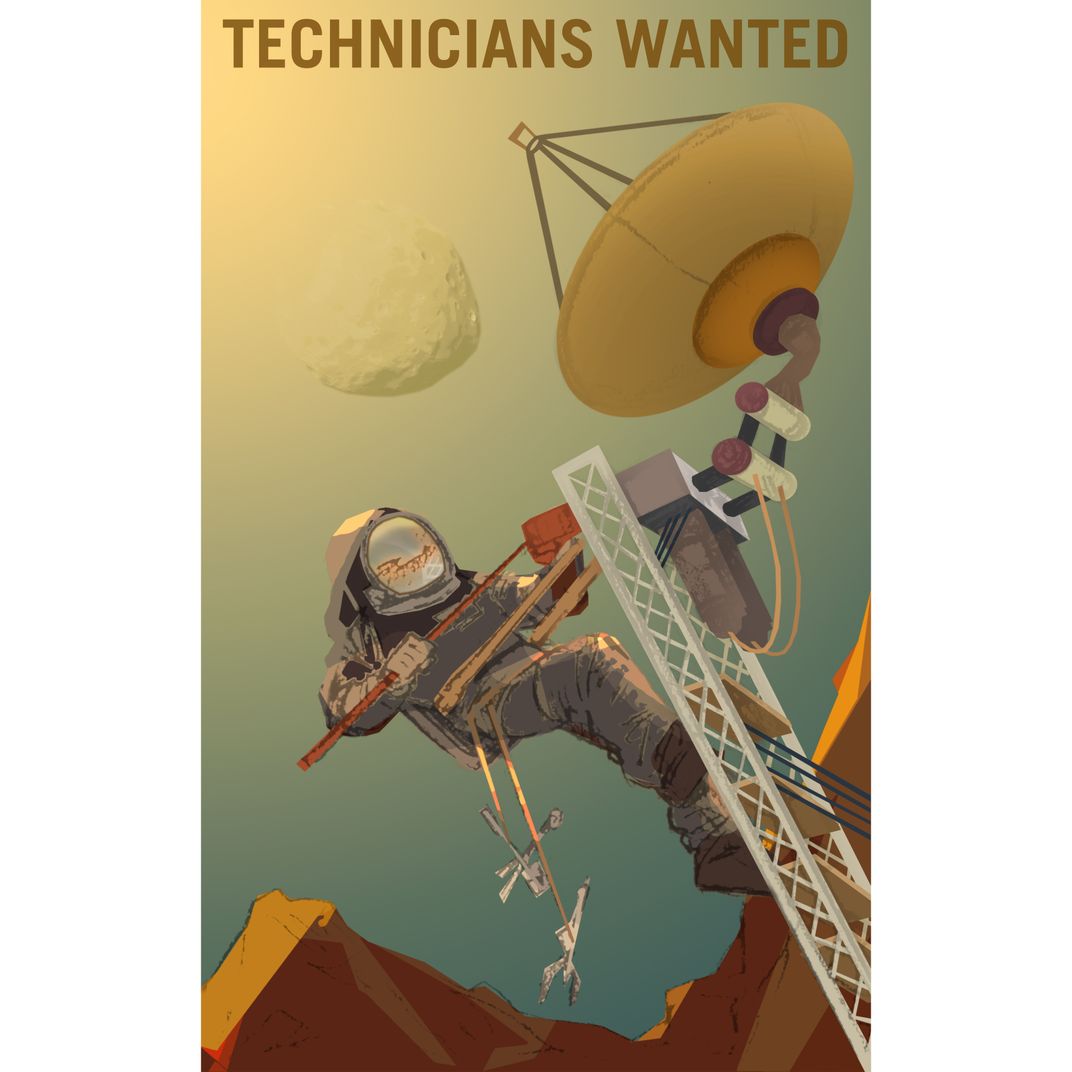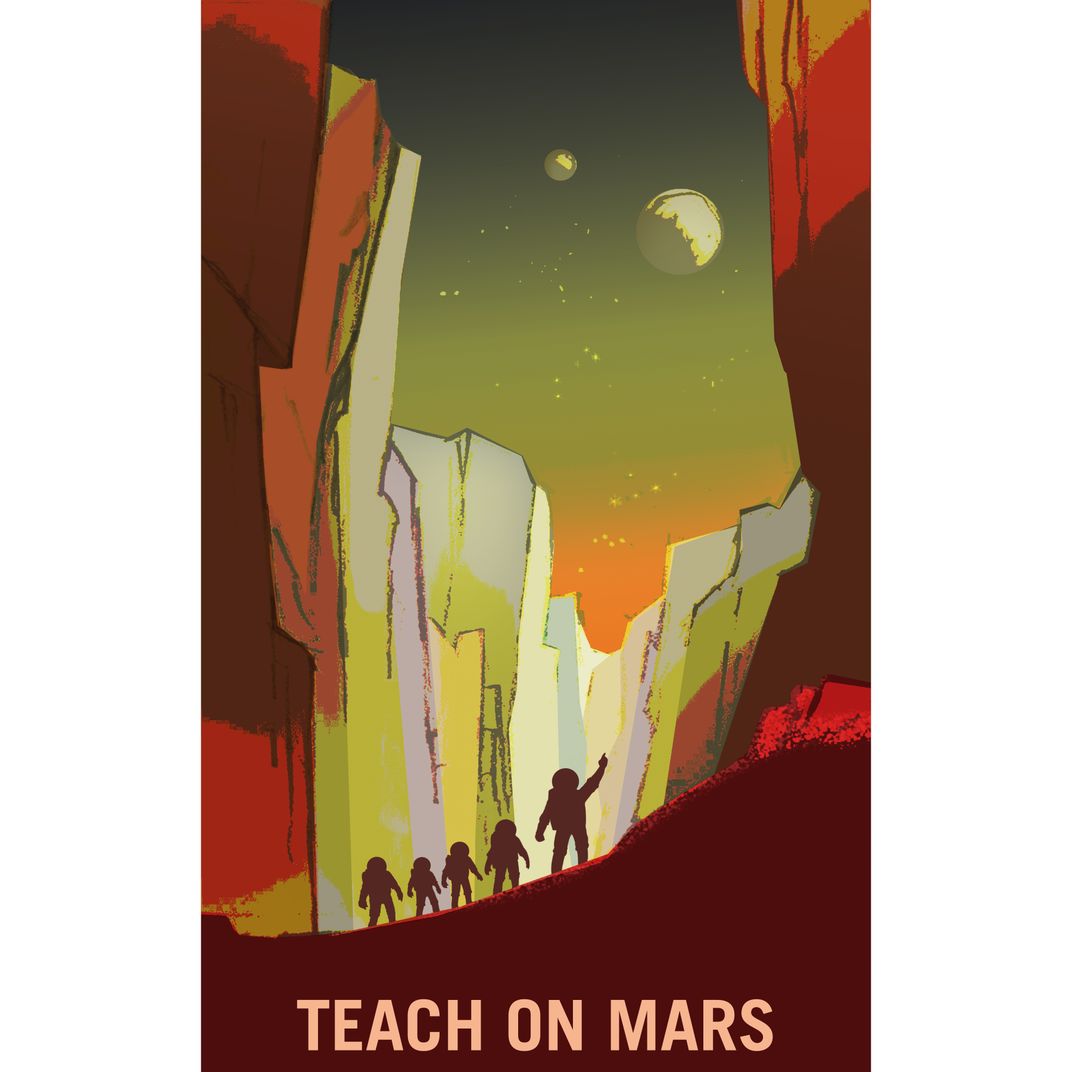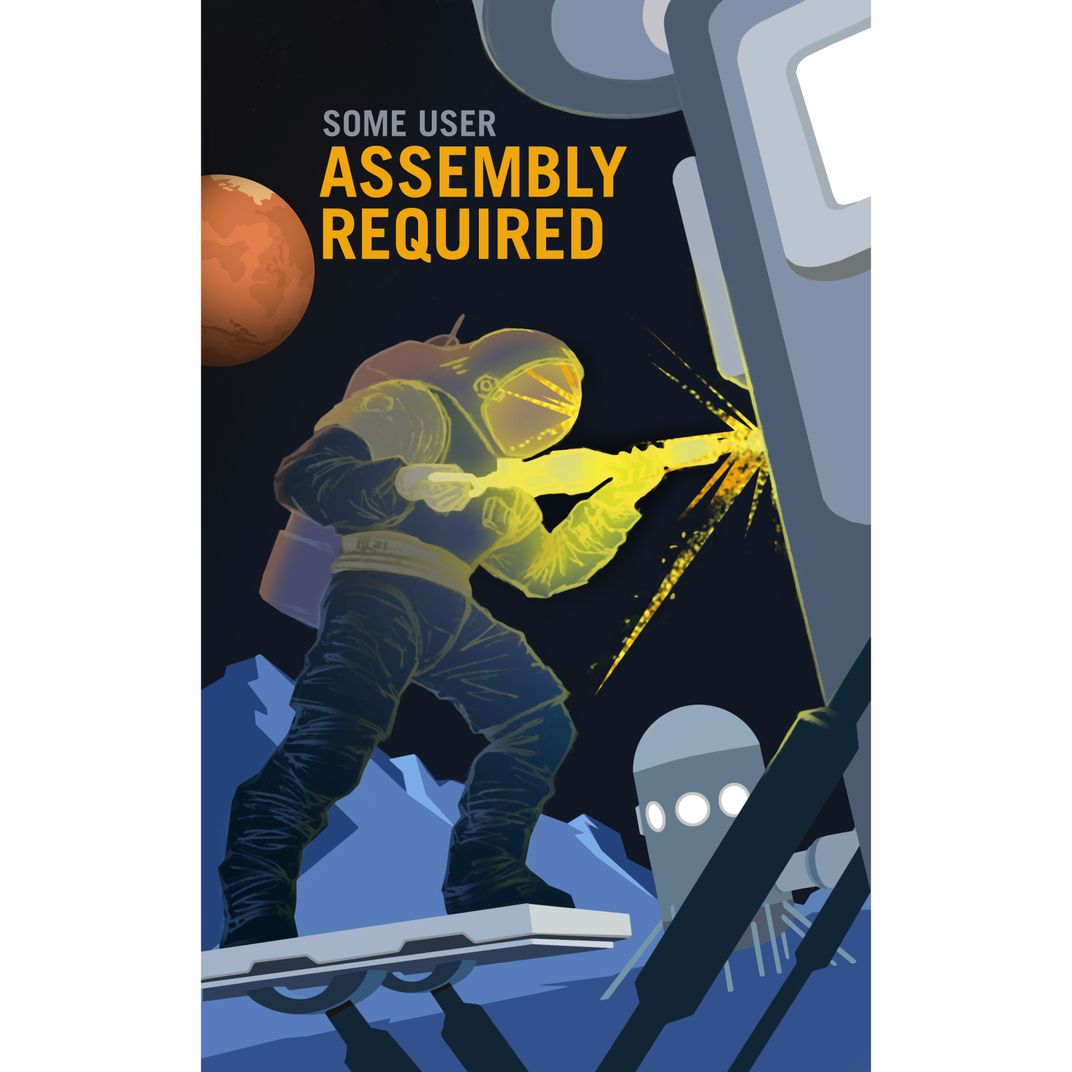Check Out NASA’s Retro Mars Recruitment Posters
Farmers, teachers, surveyors and engineers will all be needed in the envisaged Mars settlement
Many people may know that Mars Needs Moms, but when human colonization of the Red Planet begins in earnest, it will also need farmers, teachers and surveyors. Or at least that’s according to NASA's retro-style Mars Mission recruiting posters.
The posters were originally commissioned for a 2009 exhibit at the Kennedy Space Center. Now, the agency has released high-resolution images of the artwork for anyone wishing for a reminder of an imagined space future. The fanciful artwork includes job descriptions with a little dose of science.
“Work the Night Shift on Martian Moon Phobos: Night owls welcome!" touts the sologan on one poster. "If you lived on Mars' moon Phobos, you'd have an office with a view, mining for resources with Mars in the night sky. Settlers below on Mars would see Phobos rise and set not once, but twice in one day!”
The images are part of a boom in retro travel posters to other worlds. Last year, NASA’s Jet Propulsion Laboratory released five retro posters as part of their Visions of the Future poster series. Earlier this year they added more for a total of 14, including trips to exoplanets like Kepler-16b, traveling to Mars, visiting the geysers of Saturn’s moon Enceladus and taking a Grand Tour of the outer Solar System. Last year, private exploration firm SpaceX also got into the game, releasing three 1950’s-style travel posters about visiting Mars on its Flickr account.
The posters are fun, but they also have more serious purpose—raising the profile of and inspiring interest in space exploration. The Jet Propulsion Lab has its own art studio which helps design and illustrate ideas and projects and helps communicate ideas to the public.
According to David Delgado, a creative strategist at JPL, the lab’s director saw similar retro posters while visiting the Grand Canyon. He suggested the studio work on a series of posters in a similar style celebrating some of the things NASA is currently exploring, including exoplanets and moons in our solar system. “The point was to share a sense of things on the edge of possibility that are closely tied to the work our people are doing today,” says Delgado.



/https://tf-cmsv2-smithsonianmag-media.s3.amazonaws.com/filer/6e/6b/6e6bca60-7d24-4107-873d-a9058b13e414/p04-surveyors-wanted-nasa-recruitment-poster.jpg)




